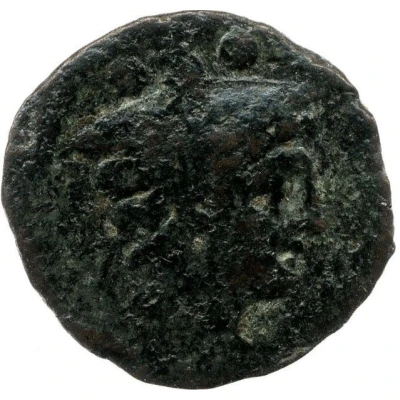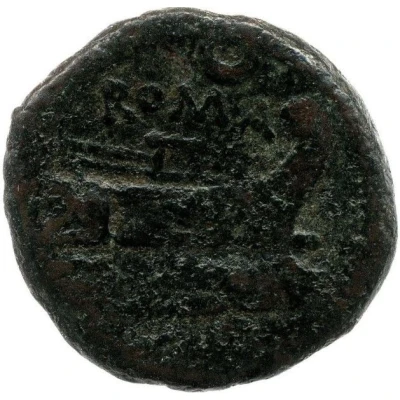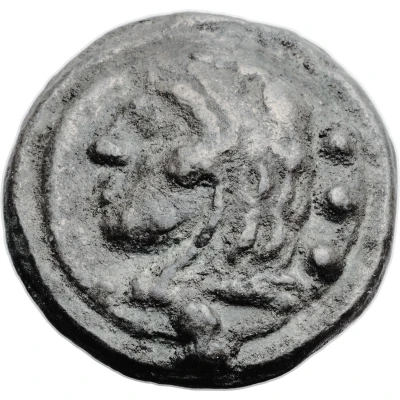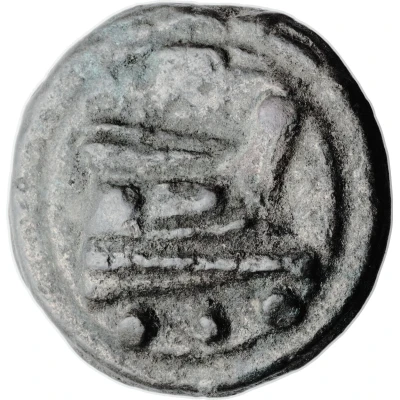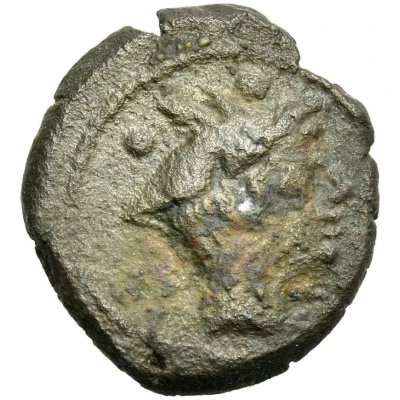
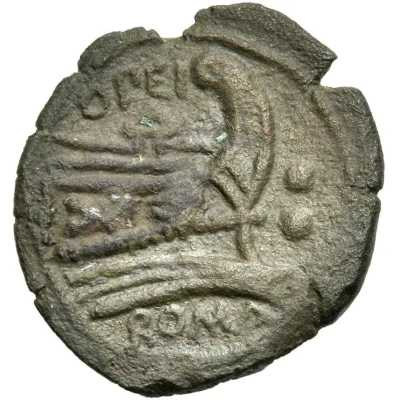

© Numismatica Ars Classica NAC AG
Sextans Opimia; OPEI ROMA 169 BC - 158 BC
| Bronze | 3.46 g | 17 mm |
| Issuer | Rome › Roman Republic (509 BC - 27 BC) |
|---|---|
| Period | Republic (509 BC - 27 BC) |
| Type | Standard circulation coin |
| Years | 169 BC - 158 BC |
| Value | Sextans (1⁄60) |
| Currency | Denarius of 10 Asses (221 – 141 BC) |
| Composition | Bronze |
| Weight | 3.46 g |
| Diameter | 17 mm |
| Shape | Round (irregular) |
| Technique | Hammered |
| Orientation | Variable alignment ↺ |
| Demonetized | Yes |
| Updated | 2024-10-06 |
| Numista | N#394287 |
|---|---|
| Rarity index | 100% |
Reverse
Prow right; OPEI above and denominational mark (two pellets) before.
Script: Latin
Lettering:
OPEI
ROMA
Translation:
Opeimia
Rome
Comment
The gens Opeimia as written on coins, otherwise Opimia, was a plebian family, distinguished by several consulships, especially that of Lucius Opimius.
Interesting fact
The Sextans coin was used during a time of significant economic and political change in ancient Rome. The coin's design features the goddess Opimia, who was associated with abundance and fertility, reflecting the Roman Republic's focus on agriculture and trade during this period. Despite its small size and relatively low value, the Sextans coin played an important role in everyday transactions and was a symbol of the Roman Republic's growing influence in the Mediterranean region.
